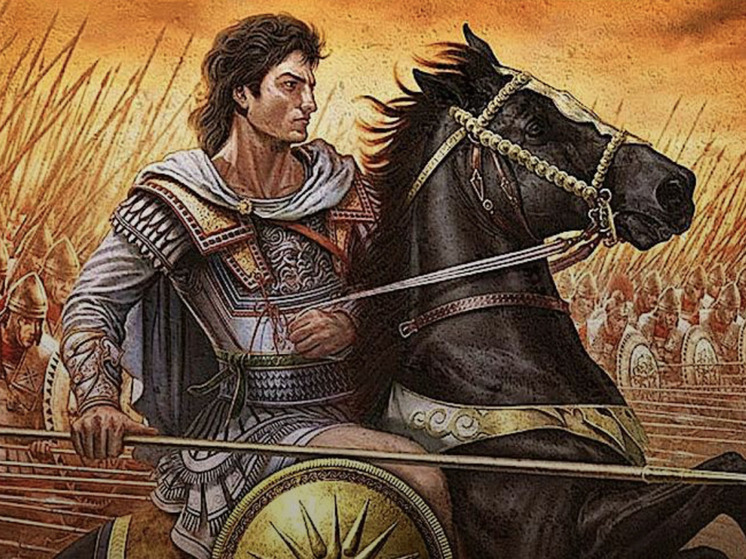Mysterious ancient Greek symbols in a Sumerian temple pointed to a great commander
The mystery surrounding a 4,000-year-old Iraqi temple has been solved by scientists. Archaeologists have discovered signs that Alexander the Great was worshiped as a deity there. Greek texts were found in a previously discovered ancient Sumerian temple — and experts were puzzled by them until recently.

Archaeologists at the British Museum believe that the ancient Sumerian temple of Girsu was founded in Greece, where Alexander the Great was considered a god. In the modern Iraqi city of Tello, archaeologists previously discovered Greek inscriptions and silver coins minted by Alexander's troops around 330 BC. Such finds suggested that the conqueror may have visited the temple after defeating the Persians, reports the Daily Mail. Which makes visiting the shrine one of the last acts in Alexander’s life, shortly before his death at the age of 32. Ironically, archaeologists believe that the temple may even have been built by Alexander himself.
Girsu, modern Tello, was part of Sumer, one of the world's oldest civilizations, which built the first cities and created the first codes of law. The city is believed to have been inhabited since 5000 BC, becoming a sacred site for the Sumerians and the spiritual home of their warrior god Ningirsu. The temple, discovered by archaeologists, appeared long before the times of the ancient Greeks. It was built around the same time that Stonehenge was being built in Britain.
Excavations at the site began in the 19th century and revealed that a Greek structure may have been built there, but the only evidence was a mysterious tablet. In both Greek and Aramaic, the inscription read: “Adad-nadin-ee,” which experts translated as “giving two brothers.”
What puzzled the researchers was that the temple was abandoned in 1750 BC era, more than 1000 years before the birth of Alexander the Great. British Museum archaeologist Dr Sebastien Rey now believes the Greeks founded their own temple on the ancient site, perhaps to proclaim Alexander's divinity.
“It's truly mind-blowing. Our discoveries date the later temple to the period of Alexander's life. But there is a chance, we will never know for sure, that he could have come here when he returned to Babylon, shortly before his death,” Sebastien Rey told The Telegraph.
Scientists believe that the offerings found in the temple made by someone who was very close to Alexander, or that they may have been made by the conqueror himself.
The variety of sacrificial objects suggests that the faithful may have been part of Alexander the Great's «Cavalry» or even included the ruler himself.
Researchers believe the temple may have been used to worship Zeus, whom Alexander the Great called father , as well as the combined figure of Hercules and the Sumerian warrior god Ningirsu
“This site is dedicated to the Thunderer and two divine sons: Hercules and Alexander,” comments Dr. Rey.
Much of the temple was damaged by conflict in the 20th century and destructive excavations carried out by French archaeologists in the 19th century. But using drones and remote sensing technology, researchers were able to identify a larger hidden complex.
In the fall of 2022, a team of researchers discovered the walls and records of a huge palace and sanctuary where a Greek temple was later built.
The team working at the excavation site believes that the temple was originally used for festivals, animal sacrifices and other processions dedicated to the Sumerian god Ningirsu.
Dr Ray said other scientists accused him of «making things up» » and a waste of money in the belief that the site had already been fully explored.
However, a sensational new discovery has led to a joint initiative to save endangered cultural heritage sites, led by the British Museum, the Getty and State Council of Antiquities and Heritage of Iraq.






















































Свежие комментарии